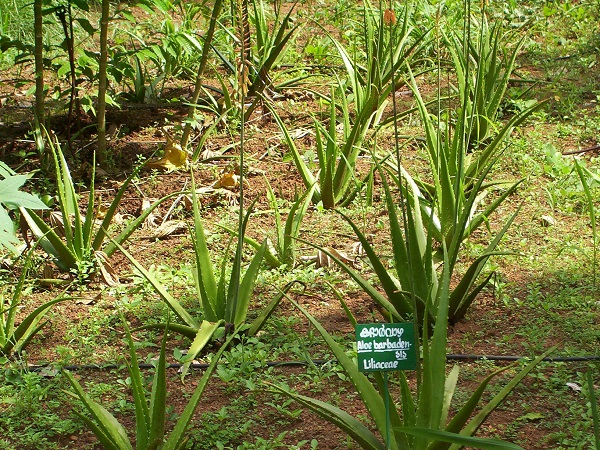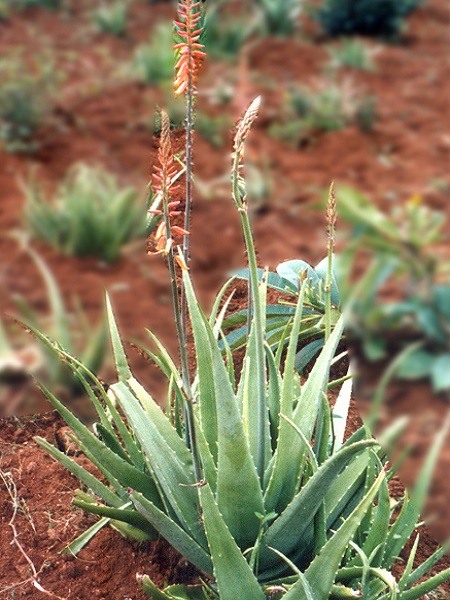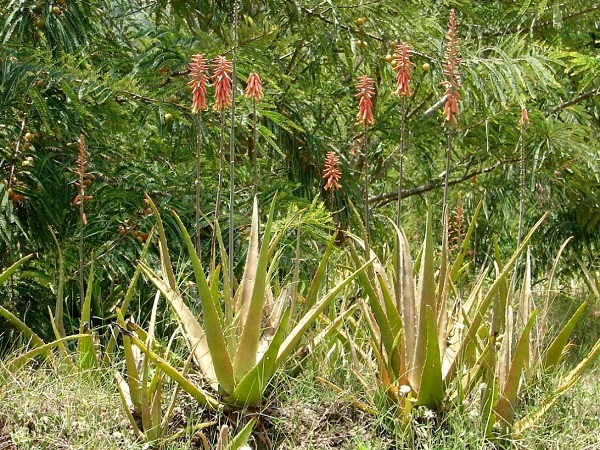
| Family | Liliaceae |
| English Name | Aloe, Barbados |
| Malayalam Name | Kattarvazha |
| Tamil Name | Sotru katrazhai |
| Kannada Name | Lole |
| Telugu Name | Kalanbanda |
| Hindi Name | Ganwar-patho, Ghee-ganwar, Gwar patta, Chhota-kanvar, Ghi kanwar, |
| Sanskrit Name | Kumari, Kanyasara |
| Trade Name | Ghikanvar, Kumari |
| Part Used | Leaves |
| In Wild | Yes |
| Under Cultivation | Yes |
| Temperature | 25 – 40°C |
| Rainfall | NA |
| Farmers | NA |
| Traders | NA |
| Institution | NA |
| Individually | NA |
| State/Region | NA |
| District | NA |
| Nursery Information | NA |
| Yield | 12- 22 tonnes/ha |
| Economic of cultivation | Cost of cultivation/hectare: ₹ 45,000(as on 2018), Net Profit/hectare: ₹ 1,40,000 ( as on 2018) |
| Quantitative quality standards | Leaf Foreign material: Nil, Total ash: Not more than 1 percent, Acid insoluble ash: Not more than 0.002percent, Alcohol soluble extractive: Not less than 0.5 percent, Water soluble extractive: Not less than 1.5 percent, Gel Foreign material: Nil, Total ash: Not more than 0.5 per cent, Acid insoluble ash: Nil, Alcohol soluble extractive: Not less than 0.5 per cent, Water soluble extractive: Not less than 0.5 per cent, Dried juice ( Aloe) Foreign material: Nil, Total ash: Not more than 3.5 percent, Acid insoluble ash: Not more than 0.4 percent, Alcohol soluble extractive: Not less than 83 per cent, Water soluble extractive: Not less than 60 percent |
| Description | NA |
| Agro technology/Cultivation practices | Although Aloe vera naturally occurs in driest and poorest soils and can be grown in variety of soils, the ideal soil is slightly alkaline with pH upto 8.5. The root system is shallow and does not penetrate deep into the soil. Waterlogged soil and temperate climate are totally unsuitable. Planting-stock production Aloe vera is normally propagated through root suckers. About 15-18 cm long root suckers or rhizome cuttings are planted by keeping two third portion under the ground. 10,000 to 25,000 suckers are required for planting one hectare of land. A spacing of 45 cm x 45 cm to 90 cm x 90 cm is practiced in planting. Depending on the soil type and agro-climatic conditions, 1-2 ploughing followed by leveling are recommended. Planting can be done during two seasons (June - July, September - October) to get better field survival and subsequent growth. However, under irrigated conditions planting can be done round the year except in winter months. Irrigation Aloe vera requires minimal water; soon after planting, the land shall be irrigated. Manure and fertilizer: Use of farm yard manure 12-15 tonnes/ha and cow dung 5-10 tonnes/ha are recommended at the time of land preparation. |
| Harversting | Commercial yield is available from second year to fifth year of planting. After 5 years it needs replanting. Older leaves are harvested. The plants can be removed manually or with the help of a tractor drawn disc harrow or cultivator. |
| Processing | The juice is drained from the cut leaves into suitable vessels or squeezed or grind to get the gel. Water entered in the juice is reduced through evaporation, most frequently by boiling. |
| References | NA |


